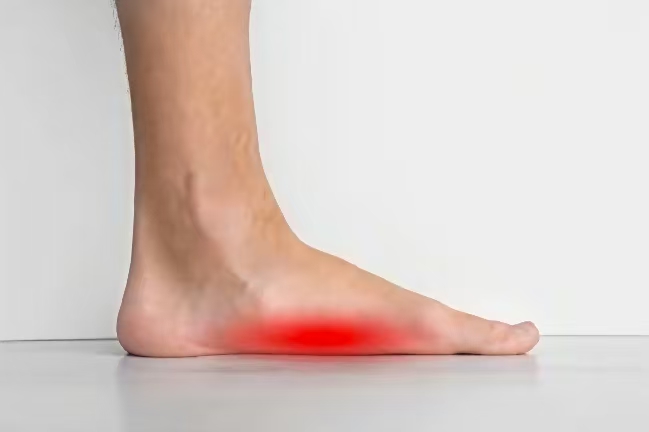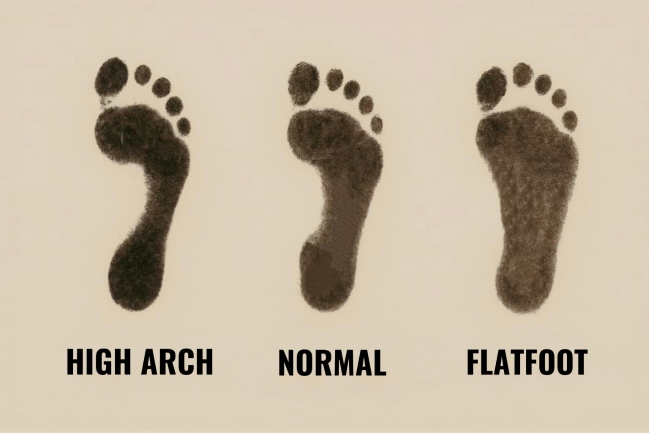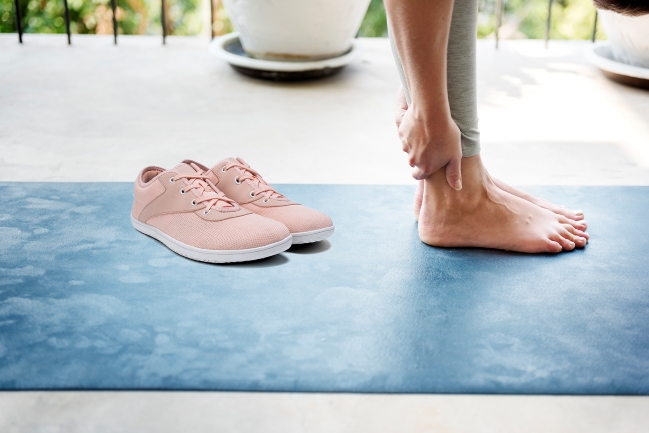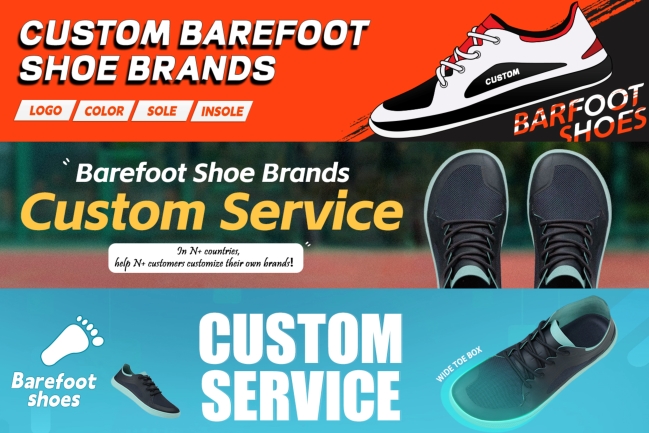Many people will find that foot problems seem to become more obvious in summer. After walking for a long time, the soles of the feet become sore and swollen, shoes tend to rub against the feet, and even the arches of the feet feel sunken. The whole person becomes tired. Why is this phenomenon especially common in summer? And can the “barefoot shoes”, a healthy shoe type that has emerged in recent years, really prevent flat feet to a certain extent? This article will conduct an in-depth exploration from three aspects: medical perspective, living habits, and footwear selection.
What Exactly Are Flat Feet?
Definition
Flat feet (also called pes planus) occur when the arches of the feet collapse, causing the sole to come almost fully into contact with the ground. A healthy arch acts as a natural “shock absorber,” dispersing body weight efficiently. When the arch collapses, it sets off a chain reaction of discomfort and dysfunction.
Types
Congenital flat feet: Arches fail to develop properly from birth.
Acquired flat feet: Result from lifestyle, obesity, poor footwear, or injury.
Effects
Heel or arch pain, plantar fasciitis
Strain on calves and knees
Chronic fatigue in the lower back
Reduced athletic performance
So flat feet are not just a cosmetic issue—they affect the entire body’s biomechanics and long-term health.

Why Are Flat Feet More Common in Summer?
Many people feel arch fatigue or even collapse more noticeably during the summer months. There are several reasons for this.
Heat causes ligament laxity
In hot weather, ligaments and soft tissues become more relaxed and flexible. This makes the arch less stable and more prone to collapsing, especially during prolonged walking or exercise.
Sweating reduces foot stability
Feet sweat more in summer. Inside shoes, moisture creates a slippery environment, forcing the arch muscles to work harder to stabilize the foot. Without proper support, this can accelerate arch fatigue and collapse.
Footwear choices
Flip-flops and flat sandals lack arch support.
Prolonged wear keeps the sole flat against the ground, weakening the arch.
Increased activity
Summer brings more outdoor activities, travel, and walking. If the arch muscles are weak, they may not withstand the extra load.
Less barefoot time
Although summer seems ideal for going barefoot, most people in urban settings rarely do so. Without natural ground stimulation, the small intrinsic foot muscles weaken, and arch function deteriorates.
How to Test If You Have Flat Feet?
You don’t always need a hospital visit to identify flat feet. Here are simple tests you can try at home.
Wet Footprint Test
Prepare a piece of cardboard or plain paper.
Wet the sole of your foot lightly (not dripping wet).
Step naturally onto the paper, then lift your foot.
Observe the footprint:
Normal arch: A noticeable inward curve appears in the midfoot.
Flat foot/low arch: The footprint looks nearly full, with little or no curve.

Shoe sole wear check
Examine the soles of your most-worn shoes. If the inner edges (especially from the forefoot to the midfoot) are heavily worn, it may indicate overpronation or collapsing arches.
One-leg balance test
Stand barefoot on a flat surface.
Balance on one foot for 10 seconds.
If the inner calf feels very strained or the arch visibly collapses, it suggests weak arch support.
Heel raise test
Stand with feet together and slowly lift your heels to stand on tiptoes.
If you can rise smoothly and your arches lift clearly, the function is normal.
If the movement is difficult and the arch does not rise, it may indicate flat feet.
⚠️ Note: These tests are for self-assessment only. If you experience pain or significant mobility issues, seek professional medical evaluation.
Traditional Footwear and Summer Flat Feet
The problem with thick soles
Thick midsoles and heavy cushioning in many modern shoes reduce sensory feedback from the ground. This causes the arch muscles to “switch off” and weaken over time.
The pitfalls of flip-flops and sandals
Flip-flops: To keep them on, the toes grip unnaturally, disrupting gait.
Flat sandals: No contour or shock absorption, making arch collapse more likely.
The athletic shoe paradox
Sports shoes designed with maximum cushioning are popular, but they keep the feet overly protected. In summer, with increased activity, the underused arch muscles often fatigue quickly.
Can Barefoot Shoes Prevent Flat Feet?
The principle
Barefoot shoes use minimalist design to mimic natural barefoot walking:
Zero-drop soles: Equal height from heel to toe for a neutral stance.
Wide toe box: Allows toes to spread and support the body naturally.
Thin, flexible soles: Restore sensory feedback and activate small foot muscles.
How they help the arch
Muscle training: Walking strengthens intrinsic arch muscles, much like daily “micro workouts.”
Improved gait: Promotes natural weight distribution and reduces overpronation.
Sensory feedback: Ground feel stimulates the nervous system for better foot control.
Scientific evidence
Studies show that people who frequently go barefoot or wear minimalist shoes generally have stronger foot muscles and higher arches than those who rely on cushioned shoes. This is especially true for children, whose arches are still developing.
The benefits of barefoot shoes in summer
Breathability and comfort:Light mesh and natural fabrics reduce heat buildup and sweating.
Versatility:Suitable for indoor use, casual walking, and even light running. Unlike flip-flops, they allow freedom while maintaining structure.
Balance of training and protection:They stimulate the arch without leaving it completely unsupported, unlike flat sandals.
How to Prevent Flat Feet with Barefoot Shoes + Daily Habits
Transition gradually
If you’ve been wearing thick shoes for years, don’t switch overnight. Start with short sessions and gradually increase time in barefoot shoes.
Combine with arch exercises
Towel scrunches (gripping a towel with your toes)
One-leg stands
Short barefoot walks on grass or sand
Choose wisely
In summer, select lightweight, breathable barefoot models instead of flip-flops or rigid flat sandals.
Manage body weight and activity load
Obesity increases strain on arches. Keep weight under control and avoid overtraining.
Conclusion
Summer is indeed a high-incidence season for flat feet. The reasons include loose ligaments, sweating, improper shoe selection and increased activity. Traditional footwear often puts the arches of the feet in a state of “hibernation”, while barefoot shoes, through natural design, allow the feet to regain strength and perception.
Barefoot shoes are not a pair of “medicating shoes”, but they are a tool for a healthy lifestyle. If one can combine scientific daily habits and use them step by step, it can indeed prevent the occurrence and development of flat feet to a certain extent.
So, if you often feel your feet are tired and your arches are sunken in summer, you might as well try barefoot shoes to let your feet return to nature and restore their due strength and vitality.
📩 Get in Touch
We create barefoot shoes designed for healthier, stronger feet.
- 📧 Email: barefoot@jinchenshoes.com
- 📱 Phone / WhatsApp: +86 199 3076 5088
- 🌍 Website: www.jinchenshoes.com




